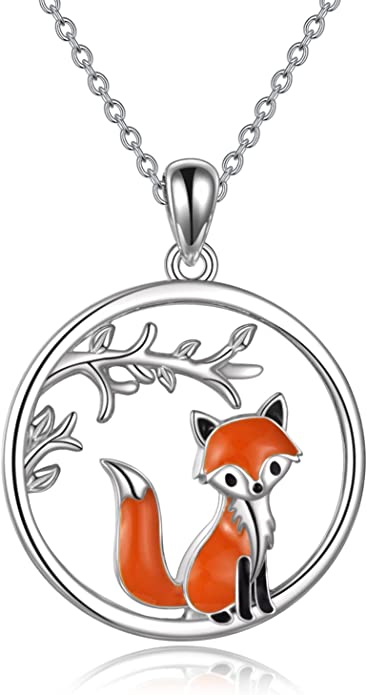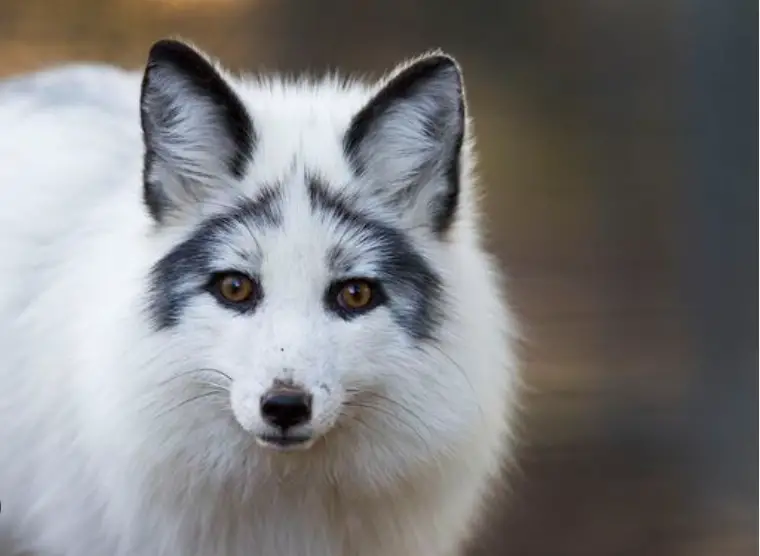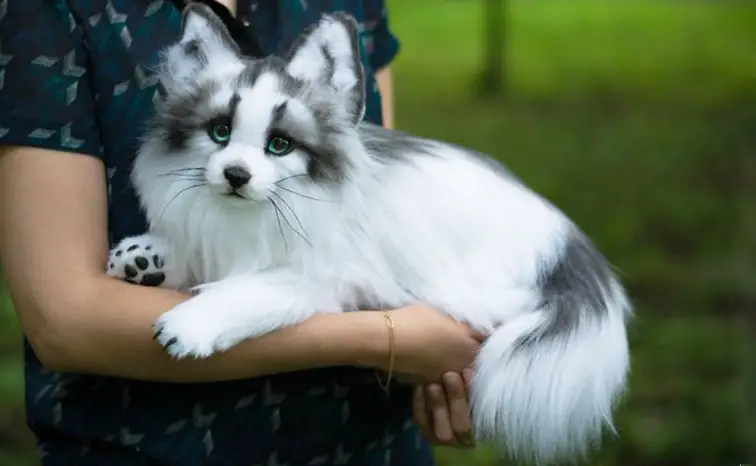The marble fox is a fascinating creature that captivates with its stunning coat and enigmatic demeanor. Known for its distinct marbled fur pattern and agile build, the marble fox possesses a unique allure that sets it apart from other fox species. In this article, we will explore the appearance, habitat, behavior, and considerations of owning a marble fox as a pet. Let’s delve into the intriguing world of the marble fox and uncover its secrets.
You may also want to read about 6 types of foxes.
Introduction
Imagine a creature with a coat resembling a work of art, evoking the beauty of marbled patterns on a canvas. Such is the marble fox, a captivating canid that enchants with its extraordinary appearance and captivating charm. Native to the Arctic regions, the marble fox has gained popularity as an exotic pet. Let’s discover the allure and intricacies of this enigmatic creature.
The Enigmatic Marble Fox
The marble fox (Vulpes vulpes) is a species of fox known for its unique coat pattern and captivating beauty. Its name derives from the marbled markings that adorn its fur, giving it a mesmerizing and ethereal appearance. Found primarily in the Arctic regions, including parts of Canada, Alaska, and Siberia, the marble fox has adapted to survive in harsh and frigid environments.
You may want to get yourself a special fox necklace!

Appearance and Characteristics
The marble fox possesses distinctive features that set it apart from other fox species.
Unique Coat Pattern
At first glance, the marble fox’s coat is a masterpiece of nature. The marbling effect creates a captivating symphony of colors and patterns, ranging from shades of white, gray, and black. The intricate marbling patterns vary from fox to fox, making each individual a unique work of art.
The Marbling Effect
The marbling effect is the result of a genetic mutation that affects the distribution of pigments in the fur. This creates the striking swirls and patterns that give the marble fox its name. The combination of light and dark hues forms an entrancing tapestry that enhances its allure.

Coat Colors and Variations
Marble foxes can display a range of color variations, from predominantly white or silver to shades of brown or black. These variations add to the mystique of the marble fox and make each individual fox truly one-of-a-kind.
Size and Physical Features
Marble foxes are typically similar in size to other fox species. They have a slender and agile build, allowing them to navigate their Arctic habitat with ease. On average, adult marble foxes measure around 18 to 25 inches in height at the shoulder and can weigh between 6 to 12 pounds. Their compact size and athletic physique enable them to move swiftly and gracefully in their environment.
Distinct Facial Markings
One of the notable features of marble foxes is their distinct facial markings. They often have dark patches around their eyes, which give them a mask-like appearance. These facial markings, combined with their piercing eyes and pointed ears, contribute to their striking and captivating presence.
Habitat and Natural Range
Marble foxes are primarily found in the Arctic regions, including parts of Canada, Alaska, and Siberia. They have adapted to survive in cold climates and are well-equipped to thrive in snowy and icy environments. Their dense fur and bushy tails provide insulation against the harsh weather conditions, enabling them to withstand extremely low temperatures.
In the wild, marble foxes inhabit a variety of habitats, including tundra, forests, and coastal areas. They are adaptable creatures and can traverse different terrain types with ease. Their natural range spans across vast stretches of Arctic landscapes, where they utilize their keen hunting skills to forage for food and navigate their surroundings.
Marble Fox as a Pet
Owning a marble fox as a pet can be an intriguing and rewarding experience. However, it is important to consider several factors before bringing a marble fox into your home.

Legal Considerations
Before considering a marble fox as a pet, it is crucial to research and understand the legalities and regulations associated with owning one. Laws regarding pet foxes vary depending on the region, state, or country you reside in. Some jurisdictions may prohibit or restrict the ownership of certain exotic animals, including marble foxes. It is essential to comply with all applicable laws and obtain any necessary permits or licenses.
Special Care and Enclosure
Marble foxes require specialized care and a suitable enclosure to thrive in a domestic setting. They are active and agile animals that need ample space to exercise and explore. Providing a spacious and secure outdoor enclosure that is escape-proof is essential for their safety and well-being. The enclosure should have sturdy fencing that is at least six feet high to prevent them from jumping or climbing over.
Inside the enclosure, provide hiding spots, platforms, and objects for enrichment to simulate their natural habitat. Creating a stimulating environment with toys, tunnels, and opportunities for climbing can help keep them mentally stimulated and engaged.
Diet and Feeding
Proper nutrition is vital for the health and longevity of marble foxes. Their diet should consist of a balanced mix of high-quality commercial fox food and fresh, raw meat. Consult with a veterinarian or an experienced exotic animal specialist to determine the specific dietary needs of your marble fox. It is important to avoid feeding them a diet solely based on dog food, as it may not provide the necessary nutrients for their optimal health. Use a slow bowl to keep them happy.
Marble Fox Behavior
Understanding the behavior of marble foxes is crucial for their proper care and socialization.
Social Nature
Marble foxes are social animals and naturally exhibit social behaviors in the wild. They are capable of forming strong bonds with their human caretakers if socialized properly from a young age. Regular interaction, positive reinforcement, and gentle handling can help foster a trusting and affectionate relationship with your marble fox.
Intelligence and Trainability
Marble foxes are intelligent creatures and can be trained using positive reinforcement techniques. They are quick learners and can pick up commands and tricks with patience, consistency, and rewards. Early training and socialization are key to unlocking their potential and establishing a harmonious relationship.
Exercise and Enrichment
Marble foxes are active animals that require regular exercise and mental stimulation. Provide ample opportunities for physical activity, such as supervised outdoor playtime in a secure area or walks on a harness and leash. Engage them in interactive play sessions with toys that encourage their natural instincts, such as chasing, pouncing, and problem-solving.
Enrich their environment with puzzle toys, hiding treats, and providing opportunities for exploration. This helps prevent boredom and promotes their overall well-being.
Common Health Issues
Like any animal, marble foxes can be prone to certain health issues. It is important to be aware of potential health concerns and provide them with proper veterinary care.
Regular veterinary check-ups are essential to monitor their overall health, ensure vaccinations are up to date, and address any emerging health issues promptly. Common health concerns in marble foxes may include dental problems, obesity, digestive issues, and diseases that can be prevented through proper diet, exercise, and regular veterinary care.
Frequently Asked Questions
Q1: Are marble foxes legal to own as pets? Laws regarding pet foxes vary, so it is crucial to research and understand the legalities and regulations in your specific area before considering a marble fox as a pet.
Q2: Can marble foxes be kept with other pets? Marble foxes have strong predatory instincts and may not be suitable to be kept with smaller pets, such as rodents or birds. It is important to carefully introduce and supervise interactions with other animals to ensure the safety of all pets involved.
Q3: Do marble foxes make good companions? Marble foxes can form strong bonds with their human caretakers and provide companionship. However, they require specialized care, space, and attention to ensure their well-being.
Q4: What is the lifespan of a marble fox? Marble foxes typically have a lifespan of around 8 to 15 years in captivity when provided with proper care, nutrition, and veterinary attention.
Q5: How much exercise do marble foxes need? Marble foxes are active animals and require regular exercise to stay healthy and stimulated. Aim for at least one to two hours of exercise and playtime daily, ensuring they have opportunities to explore and engage in physical activities.
Conclusion
The marble fox is a captivating and unique canid that exudes an air of mystery and charm. Its mesmerizing coat patterns and agile nature make it a remarkable creature to behold. Owning a marble fox as a pet requires careful consideration, as they have specific needs and legal considerations to be aware of. With the right care, socialization, and enrichment, a marble fox can be a delightful companion and a fascinating addition to your family. Remember to prioritize their well-being, provide proper veterinary care, and enjoy the journey of sharing your life with this extraordinary creature.
